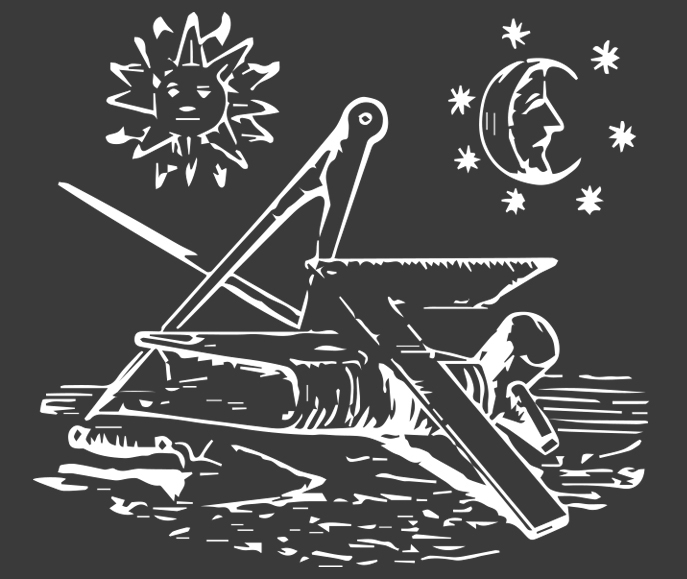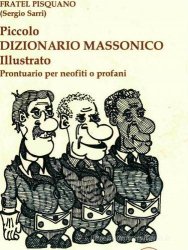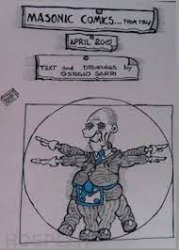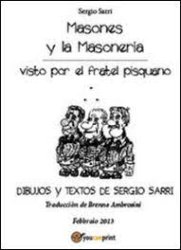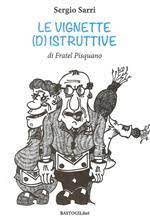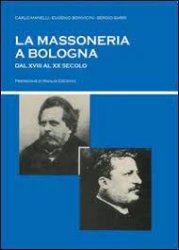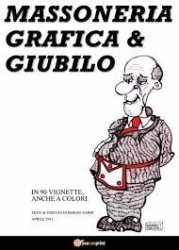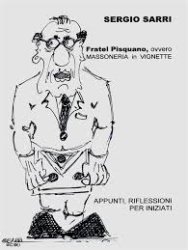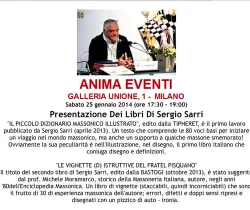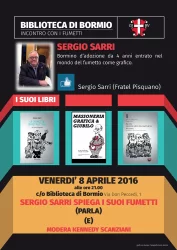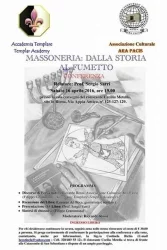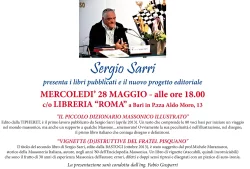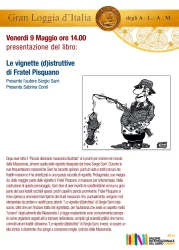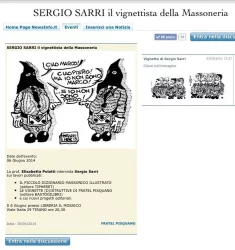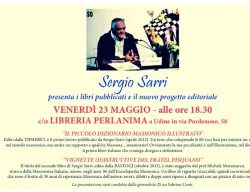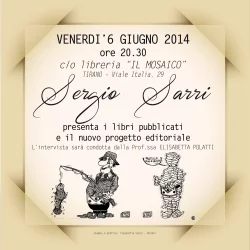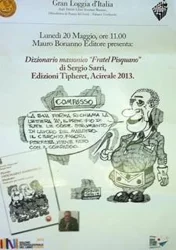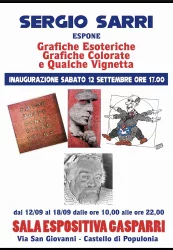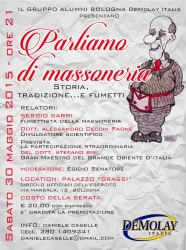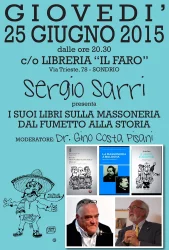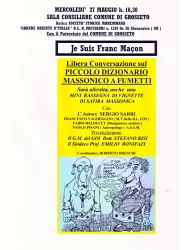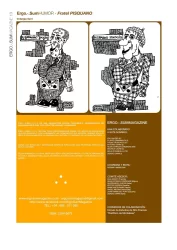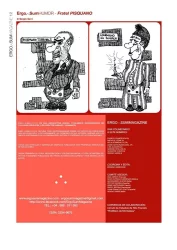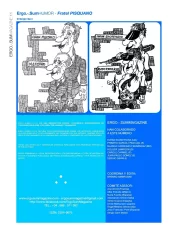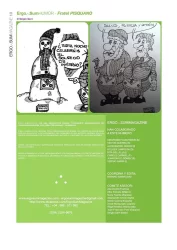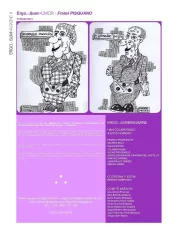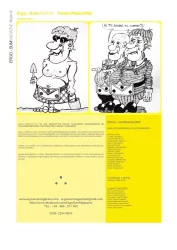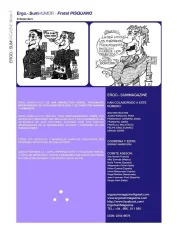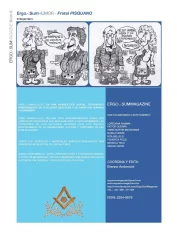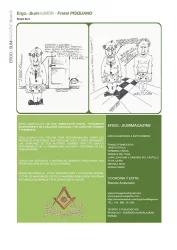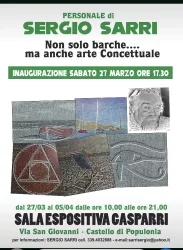Step by step
Sergio Sarri has always drawn with a felt-tip pen first and with a nib afterwards. Even during the years in which he was a banker, thirty as he specifies, he never neglected his dexterity, fascinated by those sheets which he could give shapes and colors that is life.
Sergio has been a Freemason for three generations and explains to us that Freemasonry is a school of thought, a training ground for thought, where the Brothers, as the members of Freemasonry call themselves, grow up together discussing scientific issues that can affect any subject of study. Freemasonry is free from any politics or religion. The term derives from the French mason which means bricklayer. The first guilds were constituted by the masons who adopted a logo in which their work tools were present, the square, the compass and the trowel. Later the guilds began to enrich themselves with new workers, municipal messengers, merchants, lawyers, notaries, and the Freemasons kept the same logo that had previously belonged to the masons' guilds, trowel, compass and square as speculative masons.
To explain the concept according to which Freemasonry is research and study, in 86 the book by Sergio Sarri "Freemasonry in Bologna" in which with the lawyer Bonvicini he resumes the study of a document of the 300 that was at the time the object of research by Ugo Lenzi, who died at 104, and of Carlo Manelli, his secretary, in relation to which there remained about 60 pages of writings and many verbal reports collected by him and expanded and enriched in the book in question.
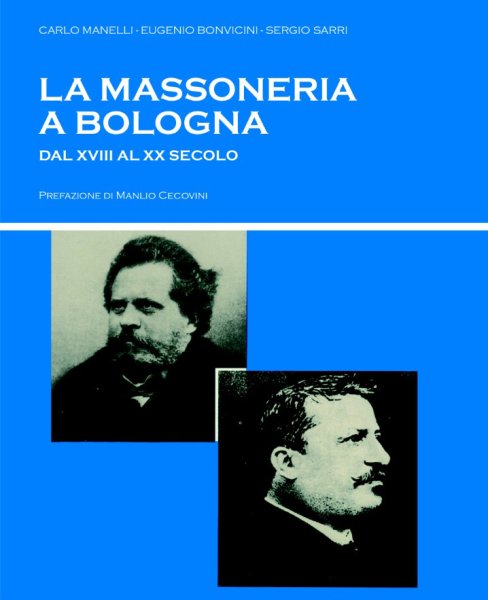
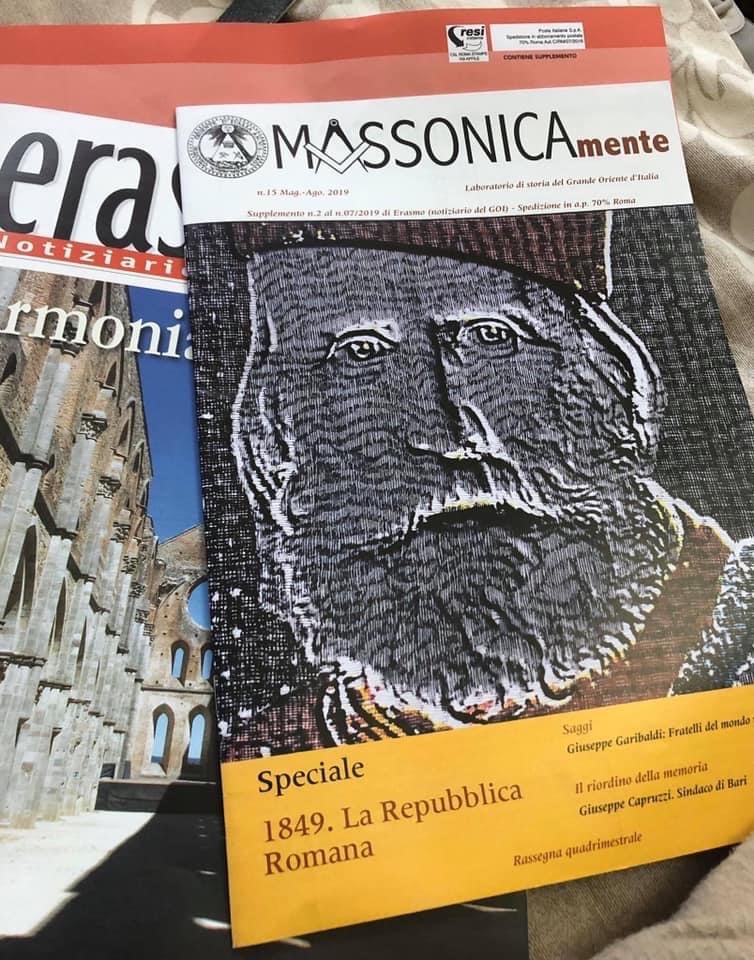
The artist in his long journey enlightens us on the meaning of the term Freemasonry and on its philosophy.
Being a Freemason means to love studying and underlines, also being ready to do good, remembering in this regard that the night kindergartens in Turin are the realization of a Freemason project.
He then recommends reading a splendid 1981 book by Father Molinari, Pauline edition, in which Freemasonry is defined as the Lay Cathedral of Brotherhood.
He then recalls that Walt Disney is a Freemason who created Pinocchio, the most beautiful Masonic fable where the transformation of the fluffy puppet into a child represents the act of initiation necessary to be accepted into Freemasonry.
Sergio Sarri's key character is Brother Pisquano, a Freemason prototype of a simpleton who doesn't want to make fun of anyone.
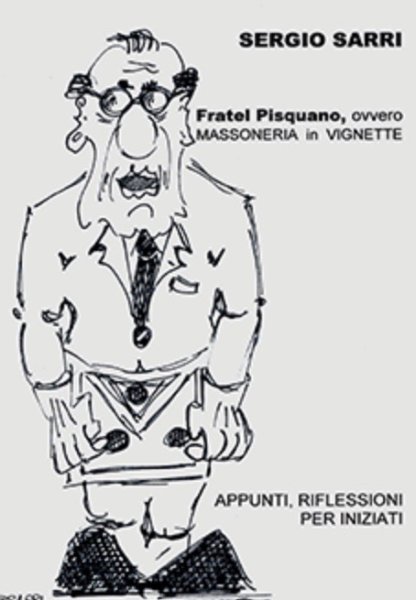
In the cartoons The artist plays with the Freemason world, making fun of the way the Brothers themselves behave, who have willingly accepted to become ideas for the implementation of conceptually complex cartoons in which the Masons make fun of themselves. From the avalanche of the artist's words shines forth a clarity and an indisputable design logic as of one who knows exactly the way to go, the sagacity of the few words used by his characters and drawn with the hand of a master who leaves nothing to chance.
The Small Illustrated Masonic Dictionary handbook for neophiles or laymen and for forgetful masters adds the author, there are eighty basic items that explain the Masonic symbols. This is Sergio Sarri's best known book: his characters were born when a Spanish Masonic magazine commissioned him a certain number of cartoons. The production was copious, about seven hundred, because not all of them were translatable while preserving their humor, but the artist becomes aware of his richness and the introspective path he has undertaken produces innovative culture.
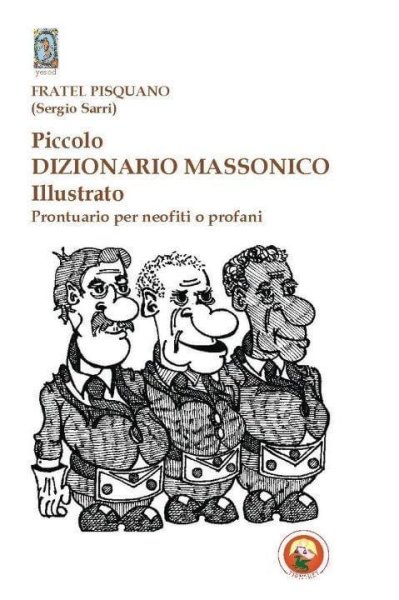
In the years since 2010, the artist gives life to a Masonic dream dimension where Brother Pisquano and his Brothers dialogue in the context of a funny but difficult satire, designed and studied first in the drawings and then in the jokes.
Below is a complete list of the books produced by the master up to 2018, the year of publication of the Small Illustrated Masonic Dictionary and which can be purchased on the Internet:
- Freemasonry in Bologna from the 18th to the 20th century
- Brother Pisquano or Freemasonry in cartoons. Notes, Reflections for Initiates.
- The Destructive Vignettes of Brother Pisquano
- Masones y La Masoneria spanish edition February 2013
- Graphic Freemasonry and Jubilation in 90 cartoons also in color April 2013
- Masoni and Comics from Italy english edition April 2015
- The Small Illustrated Masonic Dictionary Handbook for neophytes and laymen June 2018
Currently in production and also available on Facebook, Instagram, LinkedIn and Twitter
"Freemasonry in Bologna" and the "Small Masonic Dictionary"
The now famous cartoons by Sergio Sarri have been published for four years in the Masonic magazine La Grande Loggia d'Italia on the occasion of the Turin Book Fair.
Currently the artist is planning a new book "One Hundred Questions on Freemasonry" written as underlined by the author, in a simple way by studying and elaborating the design, the graphic perfection and then the joke that completes the meaning.
(Livigno) ott 2017
del 22/12/2010
del 28/6/2022
